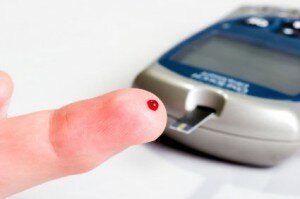
Its important to follow CDC guidelines regarding glucometer use
We are grateful to the “nurse from St. Louis” for sharing part one of a two-part blog for stressing the absolute importance of always cleaning the glucometer between patients. This week, from her point of view, she introduces the “scope of the problem” and shares some of the important “facts.”
Introduction/ Scope of the Problem
Recently there have been several documented breaches in infection control procedures, resulting in potential exposure to blood borne pathogens in a variety of health care settings throughout the United States. We have already discussed the OSHA reprimand and fine levied upon SSM Health Care in St. Louis, Missouri for not properly disinfecting point-of-care blood testing meters after each patient. In addition, the July 2014 issue of the American Journal of Nursing has an article titled “Infection Prevention Practices in Ambulatory Surgery Centers” which included reports of “blood glucometers not being cleaned between patients” at health care centers in Pennsylvania. Furthermore, Complete Health Care for Women in Ohio was reprimanded by OSHA for violations related to not protecting staff and patients from blood borne pathogens. If these types of breaches occur at large, well-regarded, quality award winning healthcare systems, then they can happen anywhere.
While discussing the issue of blood borne pathogens and trying to educate other health care professionals, one colleague informed me that she found a penlet (a lancet device meant for individual use only) being used on multiple patients at a community health clinic. Another colleague told me that she did not see the point-of-care blood testing meters being disinfected after each use at employee health screenings. Most likely these reports are just the “tip of the iceberg” in terms of how many other breaches have occurred and either were not noticed or were not reported.
As I stated in my first blog, I am going to explore in more detail the recommendations from the CDC regarding the cleaning and disinfecting of point-of-care blood testing meters, such as glucometers. I will also explain why we should be concerned about exposure to blood borne pathogens. I have some specific recommendations for safer care at future health screenings/health fairs. Additionally, we are suggesting that those who contributed to the problem (of point-of-care blood testing meters not being properly disinfected after each use) take immediate actions to rectify these dangerous practices.
Facts
The CDC is an excellent source of information on blood borne pathogens. While there are more than 3 blood borne pathogens, I am going to focus on Hepatitis B, Hepatitis C and Human Immune Deficiency (HIV). Any of these viruses may be present in someone’s blood. Everyone’s blood should be considered potentially contagious whether or not they have been diagnosed with a disease. This is the reasoning behind Standard Precautions. (The original terminology was Universal Precautions; however, the same principles still apply today.)
It is concerning anytime you come into contact with someone else’s blood. Some types of “contact” are more dangerous than others. For instance, “sharing” or reusing needles and syringes, puncture wounds from a contaminated needle, lacerations from a contaminated surgical instrument, blood splashes to the mucous membranes, and/or getting blood on non-intact skin are just a few examples of exposures.
However, “blood borne” pathogens may be present on a surface or in a liquid solution with it “looking bloody”. Think about the germ theory. You can not “see” germs without a microscope but you know they are present. Because these “blood borne” pathogens may be present on equipment, environmental surfaces and/or the nurse’s hands, proper precautions must always be taken. All equipment must be disinfected whether or not you can “see” blood on it, surfaces that the patient comes in contact with must be kept clean and, of course, gloves must be worn and hands disinfected in between each patient.
Just a reminder, the Hepatitis B virus may live up to 1 week in certain environments and the virus may be highly concentrated. The Hepatitis C virus may live up to 16 hours. Although the Human Immunodeficiency Virus (HIV) may only survive a short time outside of the human body, we need to treat all blood as potentially contagious. If you are exposed and develop one of these viral infections, you may not have any symptoms for years or only very mild symptoms initially (with the exception of some cases of Hepatitis). After time has gone by it may be impossible to determine when and where you were infected. If you have been infected with a blood borne pathogen but are not yet acutely ill, you may want to know so that you can seek proper medical care and medications, if indicated, and prevent the spread of the disease to others.
The CDC has been cautioning us for a number of years about Healthcare Associated Infections (HAIs). It has been a well known fact that Hepatitis B outbreaks have occurred in long term care facilities related to shared glucometers and/or other breaches in infection control procedures. In January 2014, information was published reiterating that if equipment was contaminated or possibly contaminated with blood, it needed to be disinfected with agents that kill blood borne pathogens. Alcohol is not effective against blood borne pathogens. Although concentrated bleach solutions will kill blood borne pathogens, those solutions will damage the meters. There are several products that kill blood borne pathogens without damaging the meters, such as CaviWipes. However, wipes meant for household use are not appropriate because they do not kill blood borne pathogens.

